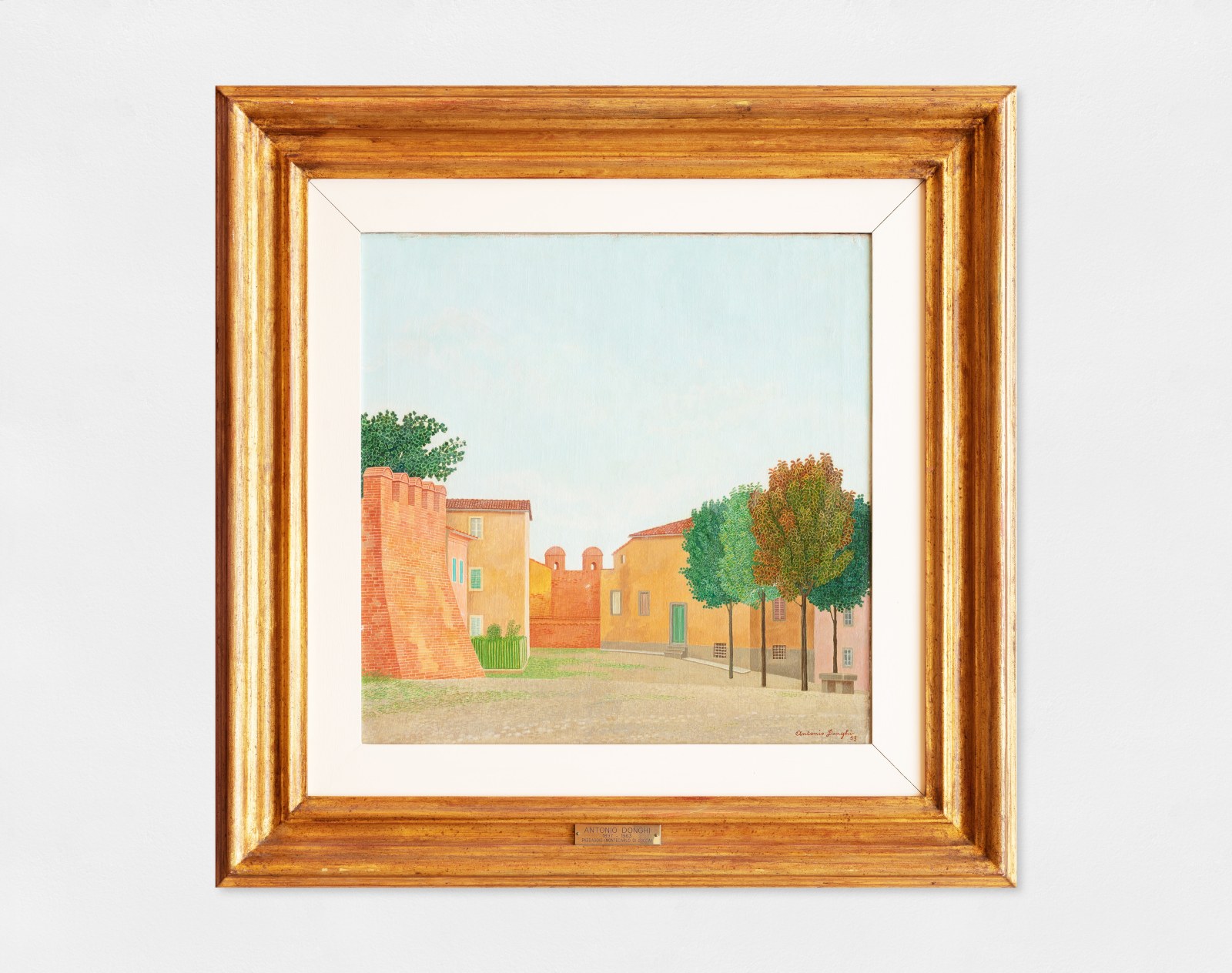-
Biography
Antonio Donghi (Rome, Italy 1897 - Rome, Italy 1963)
Born in Rome in 1897, where he graduated from the Royal College of Fine Arts in 1916.
In 1919, he undertook an important trip to Venice and Florence to delve deeper into his studies of the great Masters of the fifteenth and sixteenth centuries.
He began to exhibit his first paintings in 1923 at the Roman Biennale and, only a year later, he held his first solo exhibition. He reached the pinnacle of success with a solo exhibition in New York in 1927, during which he managed to sell numerous artworks.
He joined the circle of artists formed around “Plastic Values”, the magazine directed by Mario Broglio, which affirmed the importance of detachment from the avant-garde.
The 1930s was a period of intense work and further achievements; his artworks are purchased by important museums and galleries: the Palazzo Pitti Museum of Modern Art, the Civic Museums of Turin and Genoa, the Ca’ Pesaro Museum and the National Gallery of Modern Art in Rome.
In the same decade, he also obtained teaching positions including, in 1939, at the Central Institute of Restoration in Rome.
After the war, Donghi mainly dedicated himself to the production of small landscapes, which he painted live during his stays in northern Lazio, Umbria and Tuscany. The artworks from this period are precise and detailed.
Subsequently, at the beginning of the 1950s, while continuing to exhibit in solo exhibitions at the Quadrennials of 1952, 1955 and 1959, Donghi began a period of withdrawal and isolation.
He died in Rome in 1963.
Copyright the artist. Photo UniCredit Group (Sebastiano Pellion di Persano)
-
Works
Antonio Donghi Italian, 1897-1963
Paesaggio (Montecarlo di Lucca), 1953Oil on canvas / Olio su tela / Öl auf Leinwand17 7/8 x 17 7/8 in
45.5 x 45.5 cmUniCredit S.p.A.© Antonio Donghi, by SIAE 2025Photo: UniCredit Group (Sebastiano Pellion di Persano)
Join our mailing list
* denotes required fields
In order to respond to your enquiry, we will process the personal data you have supplied in accordance with our privacy policy.






